
Digital Marketing: Strategy Guide From Scratch [2025]
Want to learn more about digital marketing but don’t know where to start? Read this extensive guide to crack the code, and get ready to see your sales rising!
Consumer behavior has changed rapidly over the years. A significant number of buyers is increasingly shifting towards eCommerce stores and online purchases, turning digital marketing into a must for business owners.
More specifically, in 2020, 80% of consumers globally shopped online, a percentage that was vastly affected by the COVID-19 pandemic. Also, additional stats show that this trend will last over time, with the pandemic accelerating the switch to online shopping by five years.
Suppose you’re a business owner or marketer with little or no experience attracting and enabling customers to complete their purchases online. In that case, it’s normal to feel overwhelmed by those numbers. No need to worry, though! There are many options out there for beginners and pros to help you start your internet marketing efforts. Read on to find out more!
What Is Digital Marketing?
Digital marketing – also known as online or internet marketing – describes the marketing initiatives businesses introduce to promote their services and products online. Those actions aim to target consumers with products/services that will provide solutions to their pain points.
Digital marketers have lots of aces up their sleeves. Some of their techniques drive organic traffic; users can land on your website through search engines without you paying for those results. Search Engine Optimization (SEO) is such a method.
You can also acquire paid traffic with solutions like Pay-Per-Click (PPC). For instance, your business can create targeted paid ads to bring more potential customers to your website.
We’ll elaborate on these different tactics extensively below.
Inbound Vs. Outbound Marketing Methodology
The digital marketing spectrum has both inbound and outbound aspects.
As inbound marketing, we define the methods that aim to bring customers to your website through sources like blog posts or social media updates and nurture them over time. With the proper marketing outreach, consumers interested in your services will start interacting with your brand and finally turn into loyal customers.
On the other hand, in outbound marketing, a marketer or sales representative reaches out to potential customers without necessarily knowing if they’re already interested in what you offer. Cold calling is one of the most common outbound methods. Sales reps can also utilize email or mobile messaging apps for the same purpose.
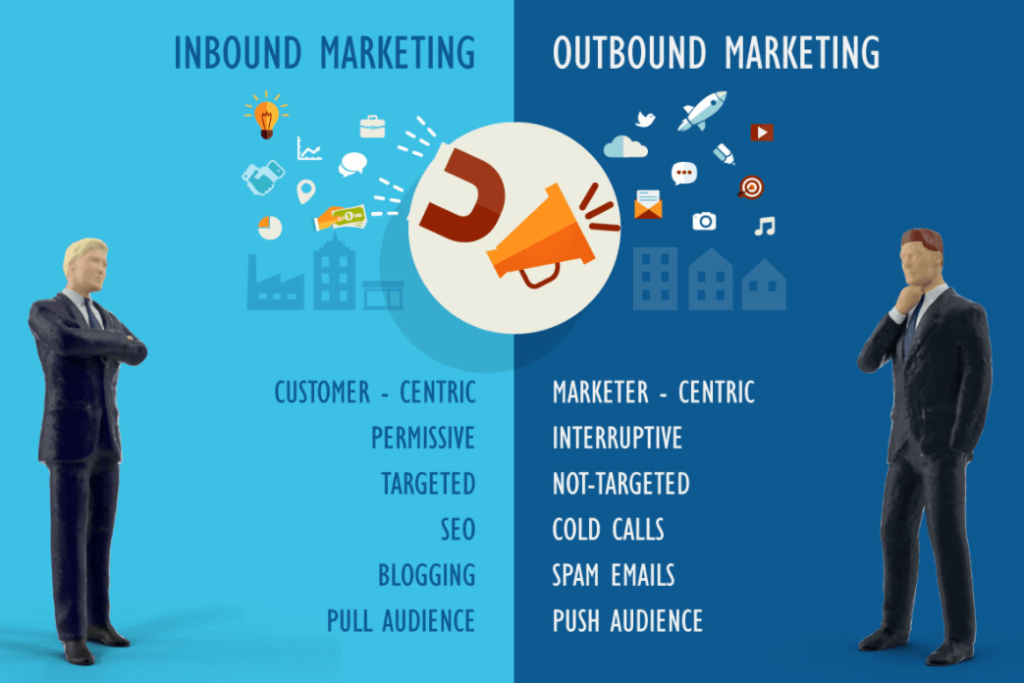
The various practices we’ll discuss below belong in the inbound category. They promote a more customer-centric marketing approach, targeting consumers or potential buyers at the right place or time, with higher chances of converting down the road!
Why Do You Need Digital Marketing For Your Business?
Here are some of the top benefits of online marketing for businesses:
It Increases Brand Awareness and Customer Engagement
As mentioned above, digital marketing helps you boost your brand awareness and acquire new leads and prospects. Once they start interacting with your brand, you can make them stick with you by providing special offers or helpful resources.
Moreover, with the right digital assets, such as email marketing, you can communicate consistently with customers and prospects. Inform them about your latest products or deals, and keep your relationship warm and steady.
It Boosts Brand Visibility Across Marketing Channels
By creating an omnichannel marketing experience across different channels, you can interact with consumers no matter what platform they use. You can invite them to your website and social media profiles or reach them by email or SMS to tell them about a new product they can’t miss.
With consistent brand visibility, you remind your prospects that you’re always there for them, ready to provide them with the best solutions. The more they see your brand assets, the higher the chances they’ll remember you for long.
Keep in mind that we all run into loads of information online daily, and it’s easy to get lost in this endless ocean. So make your outreach and messaging consistent and unique.
It Helps You Reach Your Target Audience
With specific techniques like paid advertising or search engine optimization, you can display your product or service to people who need it. These techniques are “value for money” as they target your so-called buyer personas.
A buyer persona is an ideal customer for your business. By shaping and analyzing this figure, you can grasp what they need and create the best marketing and content experiences for them.
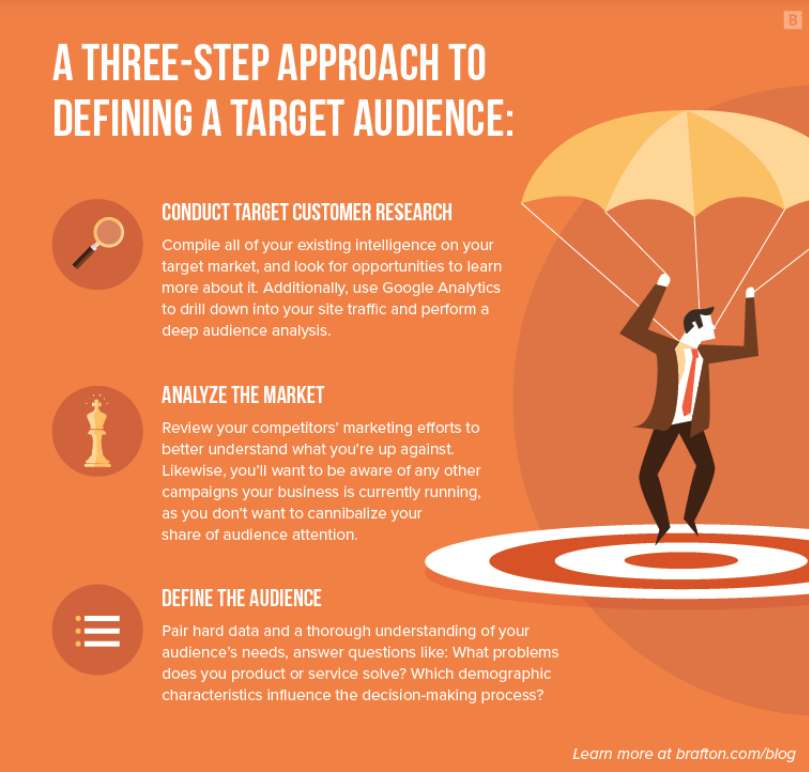
And ultimately, by optimizing your site and digital ads with the traits of your buyer personas in mind, such as age or profession, you will maximize your sales!
It Is Easy to Track and Analyze
In digital marketing, you can set tangible marketing KPIs (Key Performance Indicators) for each channel you use to analyze results efficiently. For example, with tools like Google Analytics and Usermaven, you can collect and interpret data to reach safe conclusions about the success of your campaigns.
There are additional tools that offer data analytics and reporting capabilities, too. For example, Moosend is an email automation platform offering custom report and analytics features that enable users to monitor their email campaigns. Platforms like this can save you lots of time, money, and energy if you use them wisely.
B2C Vs. B2B Online Marketing Approaches
In most cases, a business-to-customer (B2C) approach is different from a business-to-business (B2B) marketing strategy, depending on the product or service you wish to promote.
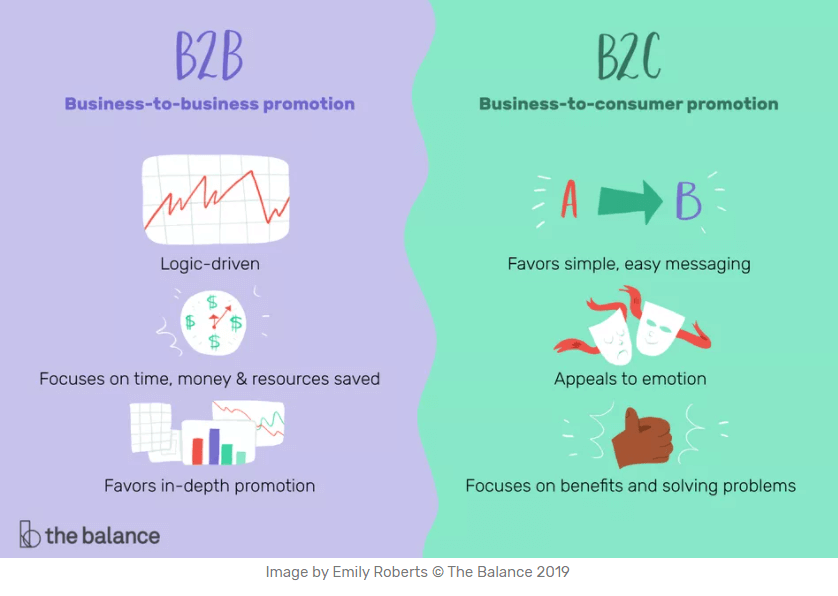
In B2C, the customer journey is more straightforward. If you manage to bring buyers to your site and offer them a unique user experience (UX) with glossy product web pages and a quick path to the shopping cart, you’ll probably convert them soon. By using social media, email, and SEO practices cleverly, you can reach prosperity!
However, in B2B, especially in SaaS companies, the buyer’s lifecycle follows a more complex pathway. Your website leads will probably look for content and resources, sign up for demos and webinars, and schedule meetings with the company’s sales team before purchasing.
In such cases, you’ll need to place more digital arrows in your marketing quiver. For example, you can invest in content marketing, paid digital advertising, and SEO to successfully move your leads down the funnel.
9 Different Digital Marketing Types: Description & Examples
Below, we’ve listed some of the top-tier practices that can help your business grow. Let’s start:
Digital Marketing Options:
- Email marketing
- Search Engine Optimization
- Social Media Marketing
- Content Marketing
- Paid Advertising
- Affiliate Marketing
- Referral Marketing
- SMS Marketing
- Website Optimization
1. Email Marketing
Emails are one of the best digital marketing solutions for both beginners and pros, especially for eCommerce. Here is why: 59% of consumers have stated that marketing emails affect their purchase decisions, with 50% buying straight from emails at least once monthly.
As you understand, setting up an email strategy is a big deal. Here are some different email types you can send to customers:
- Transactional: Automated emails triggered after a customer’s specific action, e.g., sign-up.
- Newsletters: Latest news and product updates, e.g., upcoming features.
- Abandoned cart emails: Reminders to shop items left in the shopping cart.
- Promotional: Discounts, offers, and special deals for customers.
These emails will gradually enhance customer engagement and retention and give your sales a good boost.
Top Elements of Great Emails
To create successful email campaigns that will attract the viewers’ attention, you’ll need:
- A catchy subject line
- A simple and beautiful design
- Clear copy that entices the reader
- CTA buttons that convert
Here is a fantastic example by Tupperware:
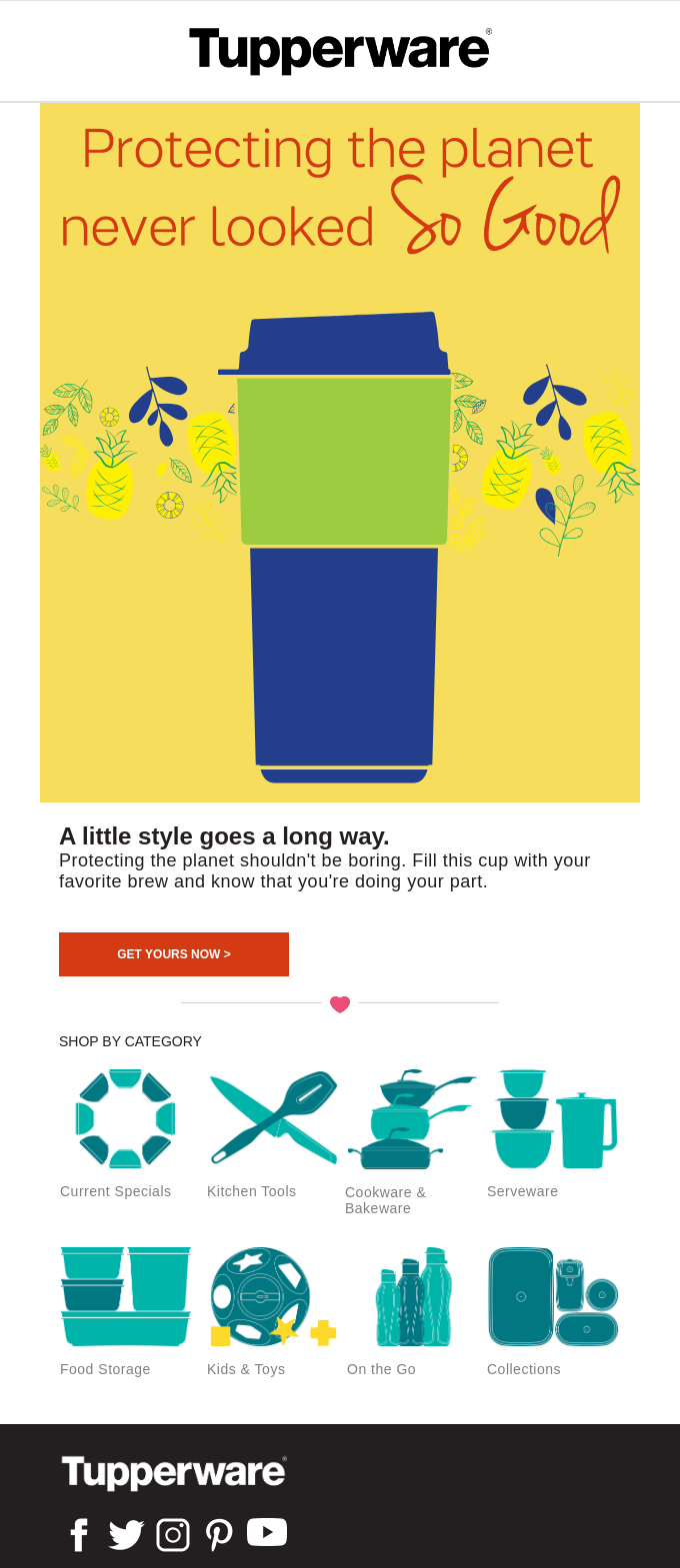
Apart from these essential email elements, certain methods can power up your email marketing success. Through list segmentation, you can divide your subscribers into different email lists based on several criteria. For example, where they are in the sales funnel or even their demographics.
Segmented lists lead to more personalized customer experiences, which can benefit your brand dearly. You can also use extra personalization techniques, such as adding your customers’ names to subject lines to draw their attention.
Keep in mind that buyers favor personalized marketing. More specifically, 91% of consumers stated that they are more likely to buy from brands that provide relevant offers.
But how can you manage all these processes with flying colors without extra effort? With an email marketing platform like Moosend or Mailchimp, you can create beautiful automated campaigns to increase your revenue and monitor key metrics such as open and click-through rates.
Looking for an email solution? With Moosend, you can create personalized email campaigns with ready-made templates and track their progress with analytics and custom report features in simple steps!
For more tips, feel free to read these best email marketing practices. Plus, if you target companies, find out how to build a B2B email marketing strategy for winners!
2. Search Engine Optimization (SEO)
In many cases, consumers will discover your brand through an ad, a recommendation, or while scrolling through social media. But what happens with consumers who casually search for information about products or relevant information on search engines?
Numbers have spoken: 80% of significant purchases start with online research – even though the purchase can also happen in a store. Google is the leader in the market share (including Google Images), followed by YouTube, which Google also owns.
As you can understand, the higher your website and content appear on search engine results pages (SERPs), the more your opportunities to increase brand awareness and acquire new leads. But how can you make this come true?
Here is where the search engine optimization (SEO) magic starts! SEO is the optimization process that aims to increase the quality and quantity of your traffic organically – aka for free.
SEO can be a little complex for digital marketing newbies. That’s why businesses that want to reap its benefits prefer to hire or partner with a strategist to own the project and bring the best possible results.
SEO: The Absolute Basics
Here is the bigger picture about SEO:

On-Page SEO is about your website and how you can boost it to rank higher on search engines. You can achieve that by using high-volume keywords and creating content that answers your target audience’s questions.
In contrast, Off-Page SEO is traffic generated by external sources in the form of backlinks. If external sites with high authority start linking to your content, the search engine crawlers will identify that your content is valid and boost your rankings.
And finally, technical SEO refers to your backend structure and site index that can impact the loading time of your pages and how search engine crawlers “read” your content. For example, broken links are a bad quality sign.
SEO professionals usually tend towards tools such as Ahrefs and Moz to monitor these processes in one place. If you want to learn more about search engine optimization, start with this excellent beginner’s SEO guide by Moz.
3. Social Media Marketing
Look at these impressive social media marketing stats: On average, 3.5 billion social media users are daily online, and 54% of users research products on social media.
Overall, social media shapes consumer behavior in diverse ways. People follow the brands they like, interact with their content, and learn about their products. Plus, consumers often turn to their favorite influencers on social media for product reviews and recommendations.
And since social media can boost brand awareness and drive purchase decisions in multiple ways, it’s crucial to explore this digital marketing territory. By posting on impactful platforms like Facebook or Instagram, you can obtain followers and transform them into potential customers. Finally, there are options for both organic and paid acquisition.
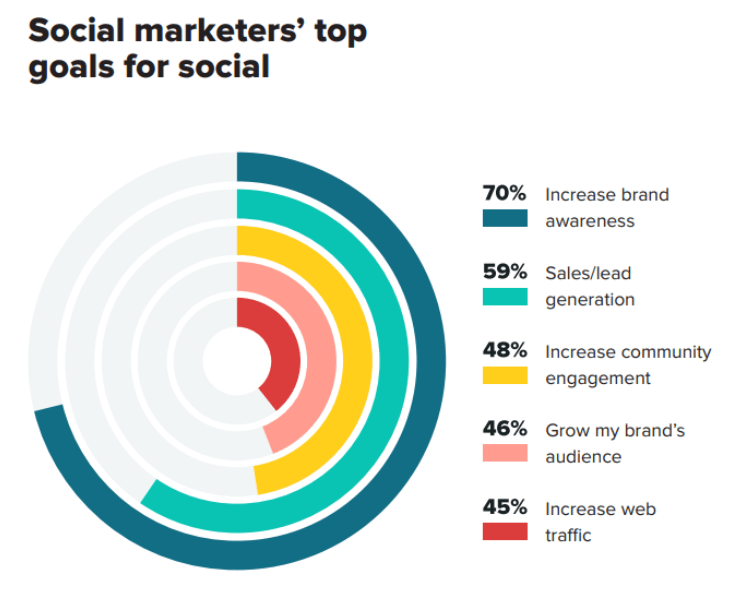
Well-known social media platforms
Here’s is a list of the most frequently used social platforms that can affect buyers’ decisions massively. Each of those platforms has its unique assets and rules:
Facebook, LinkedIn, YouTube & Twitter
Facebook has 1.84 billion active users and hosts over 200 million businesses globally using its marketing tools. Marketing professionals utilize it to promote brand awareness and drive audience engagement through shares, likes, and other reactions.
The most potent weapon of this platform is Facebook Ads. It enables you to create highly targeted paid campaigns and direct users straight to your website.
See this example by Semrush:
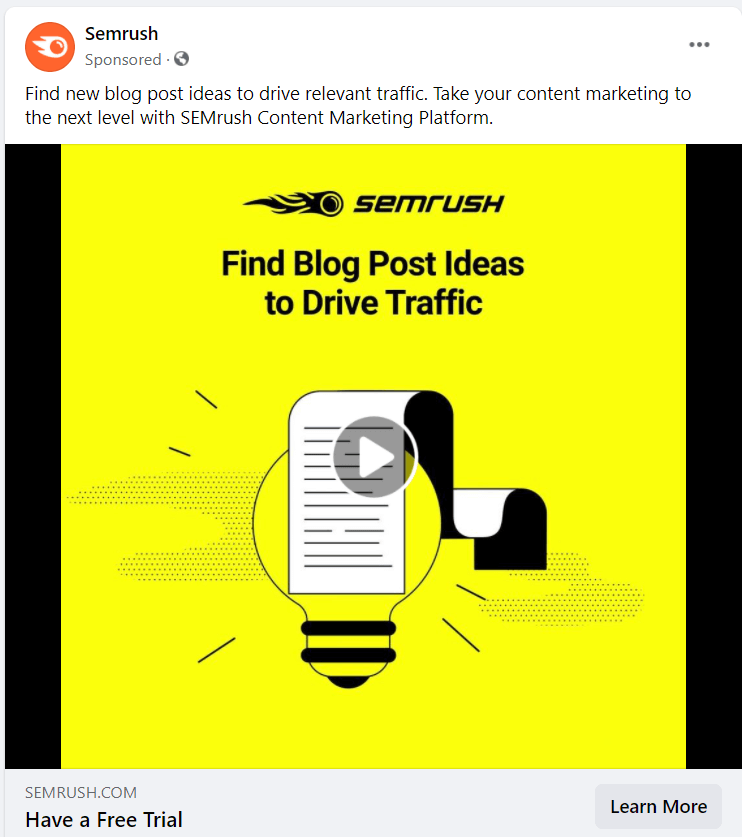
LinkedIn is a professional social media network and one of the best platforms for B2B. Companies use it to form strong relationships with customers and partners, aiming to increase engagement and retention. You can also create LinkedIn ads in simple steps.
YouTube is a leading social media website with more than 2 billion monthly users and is used for video marketing. You can upload videos such as product reviews and tours, customer testimonials, or interviews that will attract potential customers and make them trust you.
Marketers also share creative promos to entice the audience, as Cadillac recently did:
You can also run video ads on YouTube, and for more organic outreach, apply YouTube SEO rules.
Twitter has 126 million daily active users, and its biggest asset is real-time information. Apart from brand awareness and ads, Twitter helps businesses listen to customers and engage with them actively on the spot. That’s why it’s great for customer support, too.
Here’s a Twitter post by The School Of Life that aims to attract and engage followers organically:
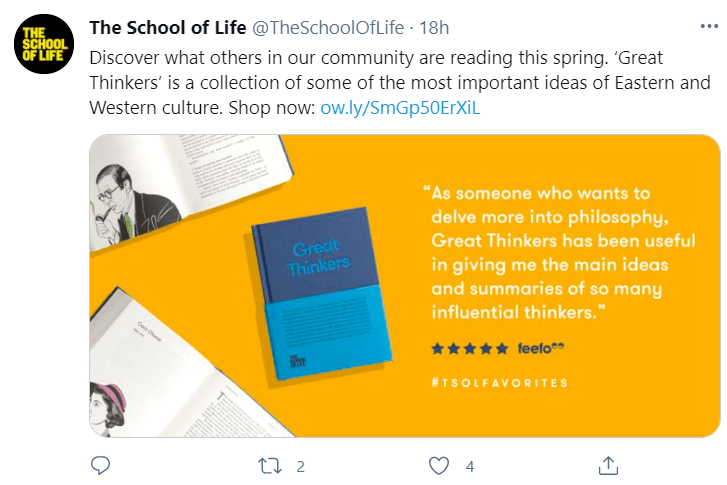
Instagram, TikTok, Snapchat & Pinterest
Instagram has become one of the most visited sites that can affect consumer behavior. It’s the best platform for product-led businesses, with 25 million companies already using it.
Instagram is also great for influencer marketing. Its Shop button allows social media users to search for products and find out more about them. Plus, it’s a site that reinforces user-generated content, so your business can benefit from word-of-mouth marketing. Learn more in this Instagram marketing guide.
TikTok and Snapchat are famous among younger audiences such as GenZ and perfect for B2C that want to advertise their products more creatively. Moreover, they’re both ideal for raising brand awareness and leveraging user-generated content. For more info, tune into this Tiktok guide and read our Snapchat for business insights.
And finally, Pinterest is the best solution for visual advertising that can inspire potential customers and bring them over to you if you match!
Look at Sezane’s example:

Ready to create a social media marketing strategy that will boost your sales? Then, go get ’em!
4. Content Marketing
Content marketing is the art of creating valuable and relevant content for your target customers to attract, convert, and retain them. And this digital marketing practice seems to work pretty well, as consumers highly appreciate brands that craft great content, according to the stats below:
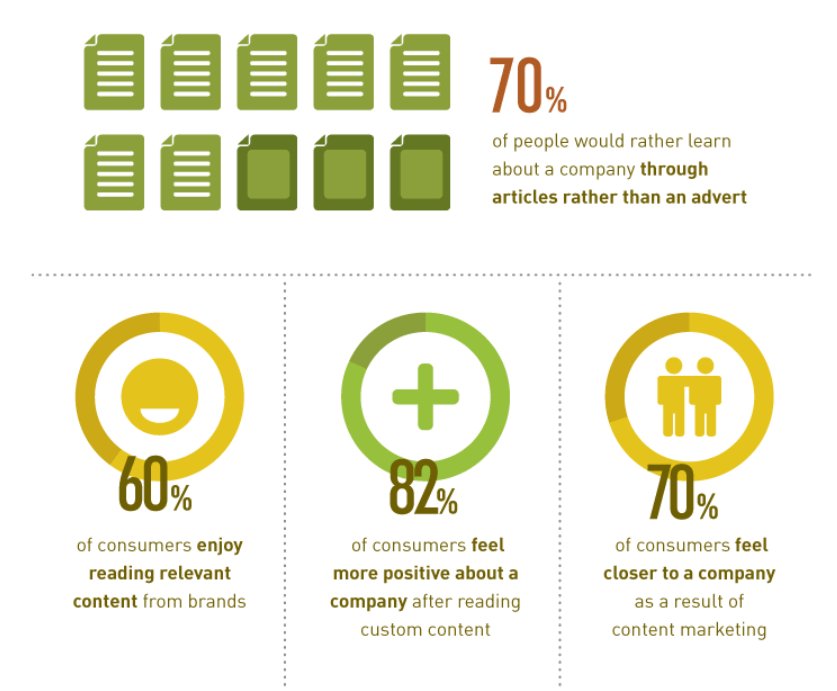
The most common content types that can shape customer opinion and demand are:
- Blogs posts
- E-books
- Infographics
- Podcasts
- Case studies/Reviews
- User-generated content
- Whitepapers
- Influencer content
Content Across the Sales Funnel
Your content should aim to educate and nurture prospects at each stage of the sales funnel. For example, at the awareness stage, consumers interact more with blog posts and infographics. At the consideration stage, they may turn to case studies.
So when creating new content, consider what your customer will gain from it, how it will make them trust you more, and what you want to receive in return. For example, do you want to obtain new leads through a new content piece? Then you can let visitors access it via email – which is the famous lead magnet.
Remember that your ultimate goal is to move those leads down the funnel. To achieve this, it’s vital to make your content accessible to people who will search for it. But how?
First of all, ensure that it’s easily reachable for your online visitors. You can also share your content on social media and drive traffic to your website organically.
For example, Headspace is a mindfulness app with a great social media approach, sharing blog posts with relevant content to engage existing customers and nurture potential ones:

And last but not least, a good SEO strategy will help you get on the top of search engines for business-relevant queries and bring fresh leads to your site. More specifically, 89% of companies rely on organic search as their top content distribution channel.
To learn more about how to nail your content strategy, read our step-by-step content marketing guide!
5. Paid Advertising
Οrganic traffic can be a perfect lead generator, but it has a con; you can’t ensure that all the leads you obtain are high-quality. Plus, the Google algorithm changes so fast that you might end up with a lower ranking than a competitor, losing valuable website traffic and prospective customers.
This is what paid advertising aims to tackle. Through paid ads, you have better control over the traffic you get and its value for your business.
Let’s see an example: You’re looking for airplane tickets to travel to London. You type on Google “cheap flight tickets to London.” Here are the first page results:
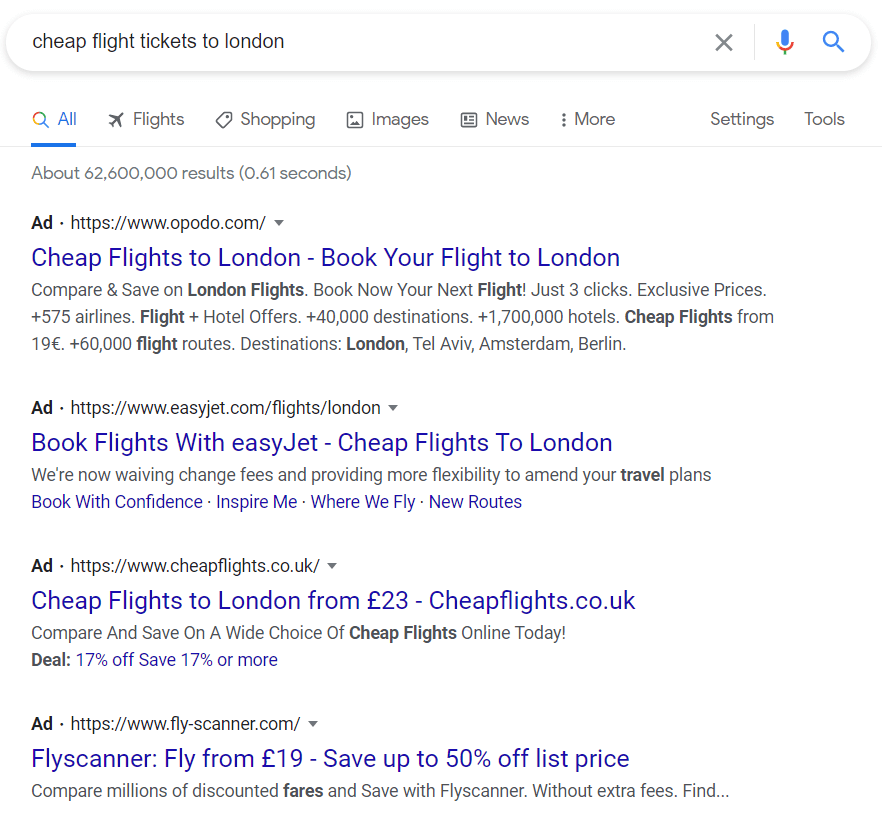
These SERPs result from paid ads created via Google Ads, previously Google Adwords. So search engines like Google or Bing allow you to pay to showcase ads for specific search terms. Considering that 63,000 queries get processed by Google each second, you can understand how powerful Google Ads can be for your business.
One of the most popular paid ad types is PPC, which stands for Pay-Per-Click. In this case, the business pays a predetermined amount for every click the ad gets. Another advertising model is CPM (Cost Per Impression), where the company pays for every thousand impressions they receive.
In the social media section, we talked about social media paid ads. They are also a great source of website traffic, and they allow you to create highly targeted campaigns in simple steps.
Here is an example TalentLMS on LinkedIn:
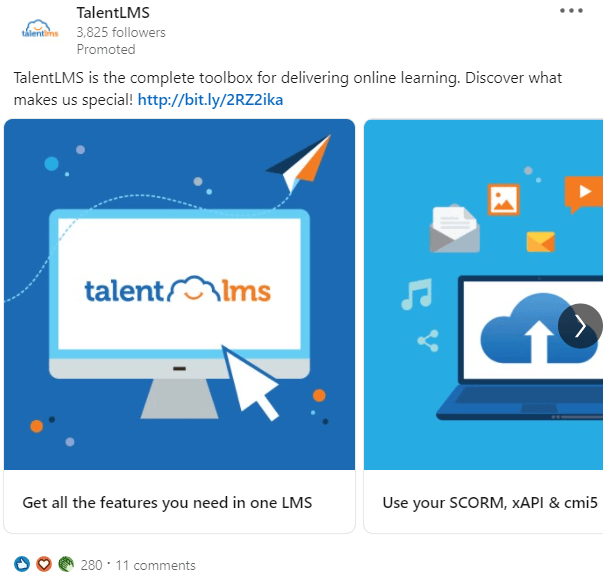
About Display Ads
Another paid digital marketing asset is Display ads, the visual ads you can run into while surfing the internet on different web pages that mimic traditional billboards. These ads are also used for retargeting so that you can bring people who have already searched your website back to it.
Here is a banner ad by Moosend:
![]()
Overall, a successful ad should contain your logo and brand colors, have an attractive design, clear copy, and a CTA that converts. Also, creating a consistent experience across channels will make it easier for visitors to remember who you are! Tools like Design.com can help you design logos in minutes with no designing experience.
Finally, influencer marketing is another type of paid advertising. Companies partner with influencers who impact their audience to promote their products through their platforms.
Instagram, for example, is an excellent platform for influencers. They promote your products to their followers through creative posts or stories. Plus, the Shop button helps consumers find advertised products in a flash.
Find here a comprehensive digital paid marketing guide that will resolve your confusion around digital ads.
6. Affiliate Marketing
Another way to utilize internet marketing to boost your sales and brand awareness is affiliate marketing, built on revenue sharing among businesses. So what exactly is it?
In this sales model, a business pays a commission to another company or professional – e.g., a blogger or publisher – when they successfully promote your product to their audience.
In most cases, affiliates receive a percentage of the product sales or a rate per action, such as referred sign-ups. You can track those conversions with the use of affiliate links.
What are the benefits of affiliate marketing? Have a look:
- Low risk, low cost: Since affiliate marketing is performance-based, you pay only for what you get, so it’s a cost-effective solution compared to other paid ad models, like PPC.
- Increased brand awareness: When you gain visibility on other trustworthy sites, you can increase your awareness and website traffic, even if your visitors don’t convert for now.
- Access your target audience: By liaising with affiliates from your niche market, you raise visibility to potential consumers.
- Long-lasting partnerships: A well-tuned affiliate program will allow you to network with trusted partners and form relationships that last with market leaders.
To create a successful affiliate program, make sure to give the right incentives to your partners so that they promote your products in the best possible way.
Look at Amazon’s invitation to potential affiliates for inspiration:

7. Referral Marketing
And who else can bring new customers to your business apart from affiliates and influencers through the power of word-of-mouth marketing? You guessed right; it’s your customers!
If you manage to please them with your products and services, they will be more than willing to spread the word. This is the heart of referral marketing, another digital marketing tactic aiming to increase your customer base through the love of your existing buyers.
But apart from delivering a great product that everyone should have, there are ways to incentivize or nudge your buyers to become your cheerleaders.
For instance, you can give them referral rewards to make it more enticing, such as cash incentives for them and discounts for those whom they refer. Make sure to delight both parties equally so that you get what you want as well!
But how exactly can you approach customers to benefit from your referral programs? There are different ways to do this:
- Make it easily accessible through your website, as Oatbox does.
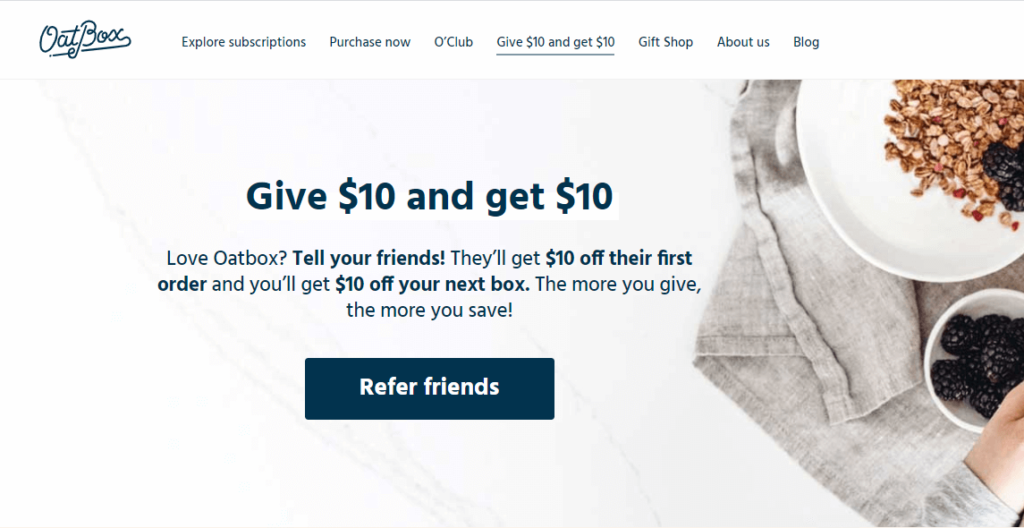
- Share it on social media like Moosend.
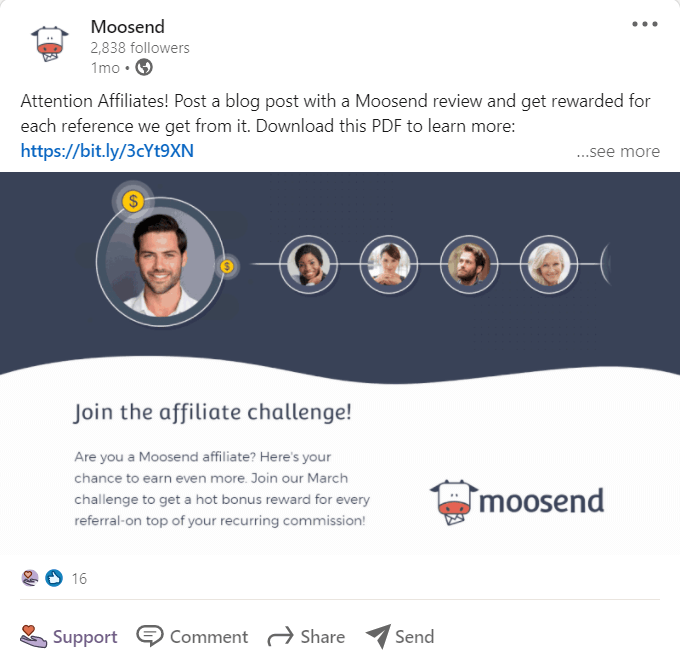
- Inform your customers through an email campaign, following Saje’s example.

8. SMS Marketing
If you want to expand your customer outreach even more, you can also consider adding SMS marketing to your digital marketing toolkit. Even though some marketers are afraid of sending text messages to customers to avoid spamming them, the engagement rates are incredibly high.
Look at these impressive SMS marketing stats:
- 79% of smartphone users decide what to purchase via SMS opt-in or other mobile device services.
- 50% of US consumers complete purchases after receiving promotional texts.
- SMS ads have a 19% click-through rate (CTR).
So it’s definitely worth giving it a shot. Overall, SMS marketing has similar principles to email marketing. For instance, you can send transactional messages after specific customer actions, or promotional texts, with coupons and discounts.
By combining SMS and email, you have better chances of getting your messages across to customers and motivating them to complete a purchase.
But first, you need to get the subscriber’s opt-in, i.e., the permission to interact with them, to start sending out those triggers and campaigns.
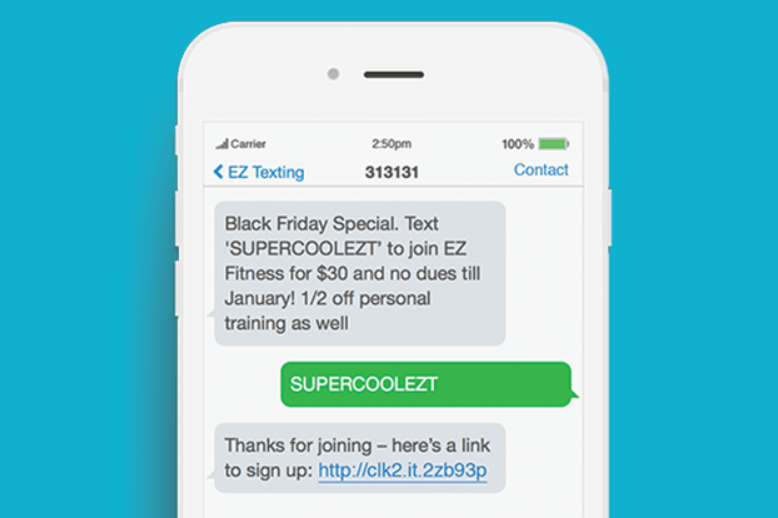
Plus, you can create segmented lists using SMS marketing software to enable more personalized experiences and schedule bulk messages using automation features. Read this SMS marketing software overview and find the best solution based on your business needs!
9. Website Optimization
If you run an eCommerce business, your buyers and prospects will land on your website at several points of their customer journey to explore your products/services. The easier your website navigation is, the better the customer experience will be, ultimately leading to higher conversion rates!
But how can you ensure that the user experience is in great shape and keeps your buyers in the right direction? First of all, you need a clear layout, where product categories and the shopping cart are easy to spot.
Your website design should please the eye with enticing copy and direct messaging. Make sure that the visitors find what they are looking for, e.g., shopping cart, product reviews, and checkout pages, in a few clicks.
Other factors such as loading time will also play a role in customer experience. Reduce noise as much as you can to secure a smooth and delicate experience.
If you want to measure the efficiency of your website, you can run customer surveys or create customer journey maps to see how you can improve your website to convert visitors effortlessly. You can also use heatmaps to track customer behavior in real-time.
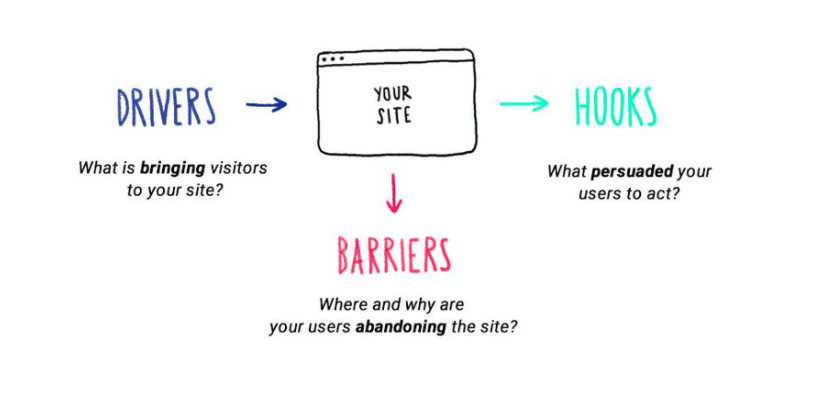
These rules are not limited to website optimization but to all pages and lead-generators, such as sign-up forms, CTAs, or landing pages. All these practices are part of Conversion Rate Optimization (CRO) and can uplevel your digital marketing efforts in more ways than you can imagine!
How To Set up A Successful Digital Marketing Process
Now that you’ve learned all these magic tips and tricks, how can you make digital marketing work out for your business? What you need is a good and thoughtful plan!
Set SMART Business Goals
First off, to prepare proper digital marketing campaigns for your business, you need to determine what you want to achieve. You can set business goals based on the SMART goal framework (Specific, Measurable, Attainable, Realistic, Timebound) to meet the best possible results.
Plus, set your budget to find the optimal formula between organic and paid tactics. Luckily, there are plenty of them to choose from to advertise your business online, based on your unique requirements. The same goes for your tools, such as marketing automation solutions.
For example, if you’ve just launched a B2C eCommerce business, you can introduce email marketing and social media activities to boost brand awareness first. This will be an affordable solution for starters, which you can revisit later on.
However, if you operate in a competitive B2B market, you’ll probably need to acquire more targeted or costly solutions, such as PPC, to reach your desired outcomes. Overall, you may utilize different digital technologies based on the customers you target and your market.
And always remember that your digital marketing strategy is a work in progress; as you proceed, you’ll discover new clues about your customers’ behavior that you should take into consideration.
Build your Buyer Personas
To attract the right people who are more likely to convert and become loyal customers, you should first analyze your buyer personas. Knowing your customers’ demographics, needs, and preferences will help you reach out to them successfully.
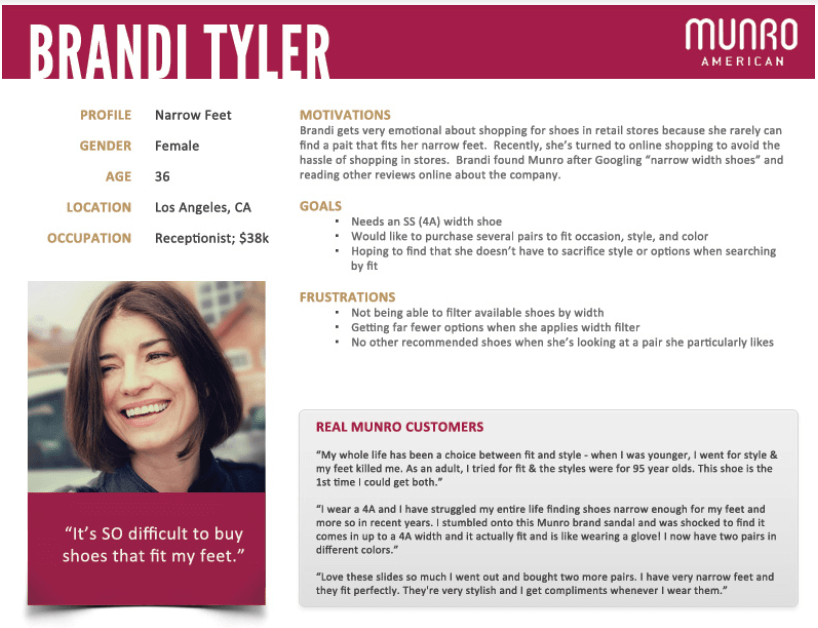
Understanding their pain points in-depth will enable you to craft the best possible solutions for them. Plus, learning their purchasing behaviors shows you which advertising methods to choose and why. For example, if they often purchase via email, you can optimize your email campaigns and push them more aggressively.
Create Content that Matters
Crafting helpful content for your customers is always a good idea to attract and retain them, even more so if it’s coupled with solid SEO tactics. For instance, you can create relevant blog posts or videos to bring value to prospects and existing customers.
Plus, offering case studies and customer testimonials are also a crucial part of your marketing strategy. Increasingly, consumers tend towards social proof to choose which product or service is best for them. Show them stories of how your brand will help them meet their goals and how you’ve benefited your customers so far.
Don’t forget to send consistent messages through your content that demonstrate your brand tone as well. The more consumers identify with your brand story and values, the more they’ll trust you in the long run!
Analyze Key Metrics
Now that you’ve started creating those campaigns, you can analyze data and monitor their progress. You can keep track of that info on an ongoing basis through your primary analytics tool, like Google Analytics.
There are additional marketing platforms that can help you monitor your growth, too. For example, if you want to check your social media success, you can also use a more specific tool like Brand24. And to follow up with email campaigns, try tools with custom report options like Moosend to receive more sophisticated results.
Adjust and Repeat
What if you’ve set your KPIs diligently, but the results you’re getting back are not the ones you were expecting? Is that a sign that you should give up? Of course not; instead, you should slightly adjust your strategy.
In general, before investing in specific techniques, it’s best to try things out a little to make sure that you know what your customers prefer. For example, maybe it’s not the best idea to start your digital marketing efforts with PPC if you don’t know how potential customers search for your products and through which source they may end up buying them.
Look at the cosmetics industry, for example. Lots of buyers trust beauty vloggers and influencers’ opinions on which products to choose. So you can try partnering with influencers and affiliates to boost sales instead.
Again, knowing your target audience’s preferences and behavior can be a game-changer for your business!
Ensure Mobile Responsiveness
Many customers who will buy your products or services will reach you via their mobile devices. More specifically, at the beginning of 2021, 54,8% of global website traffic was generated by mobile devices.
So to keep all your site visitors happy, you should ensure a top-notch mobile user experience. Enable smooth navigation for mobile users from start to finish, including everything they need to find the checkout page easily.
Get Your Digital Marketing Up And Running
Still not convinced that creating a digital marketing plan for your business is a must for its growth? We bet you are, and hopefully, you now have a better understanding of all the available options and how to make great use of them!
So get your marketing team together and discuss the best choices for reaching out to potential and existing customers. And remember, you may not see results from day one, but sooner or later, you’ll get where you want!
If you wish to start your internet marketing efforts by creating automated email campaigns, sign up for a Moosend account. We’re sure you’ll get to love our drag-and-drop editor and ready-to-use templates, among other notable features!
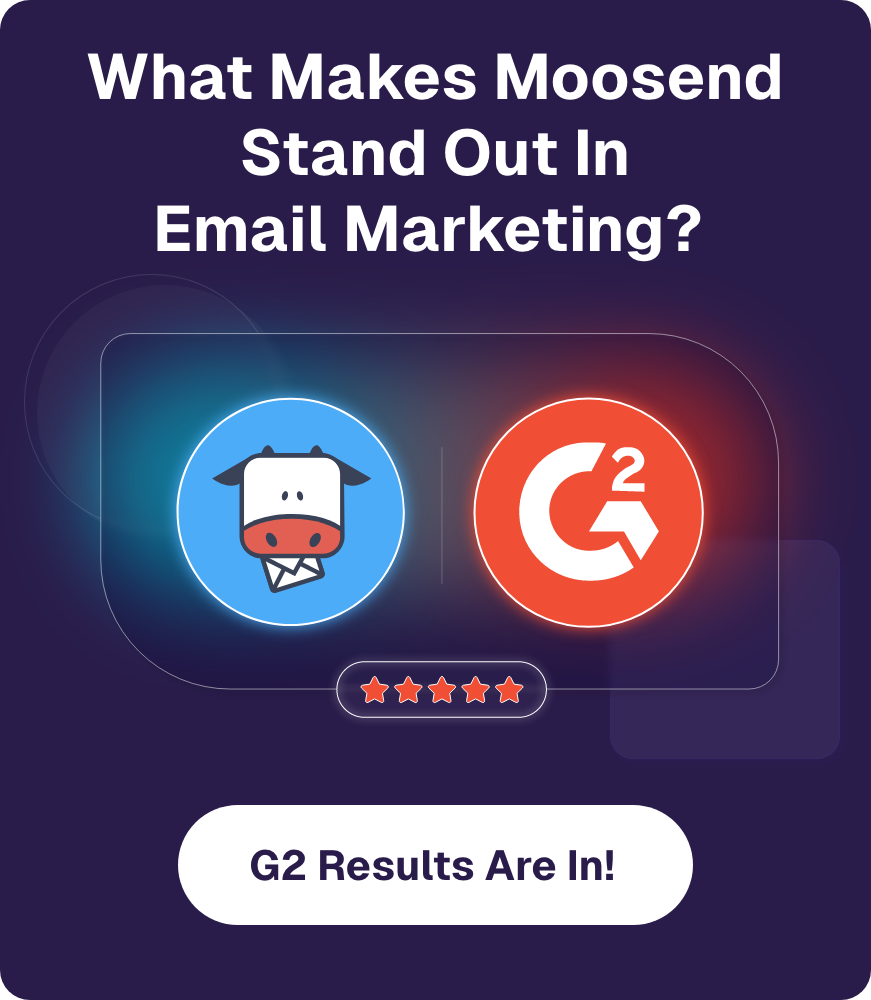


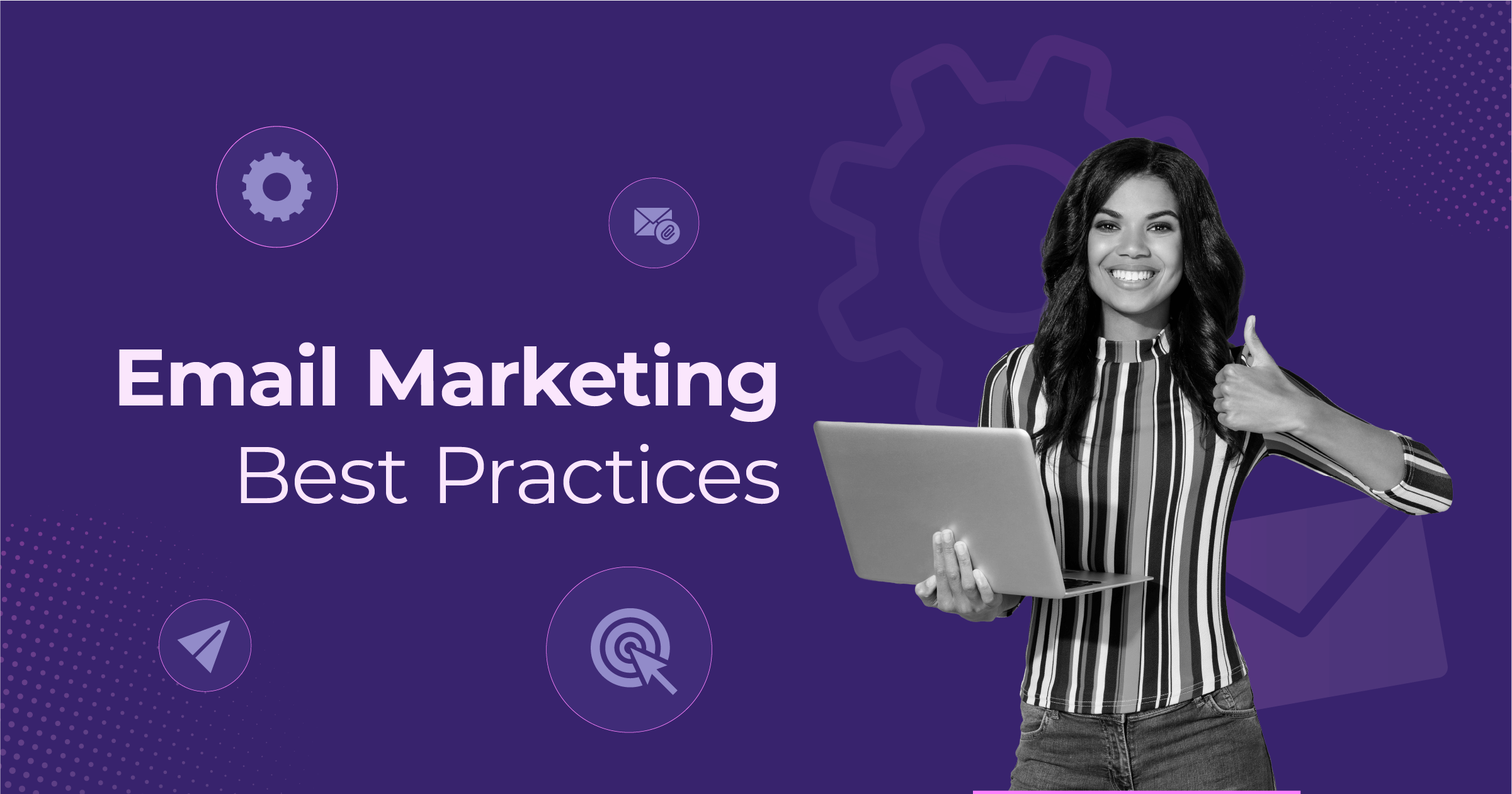
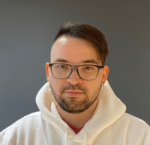 Published by
Published by
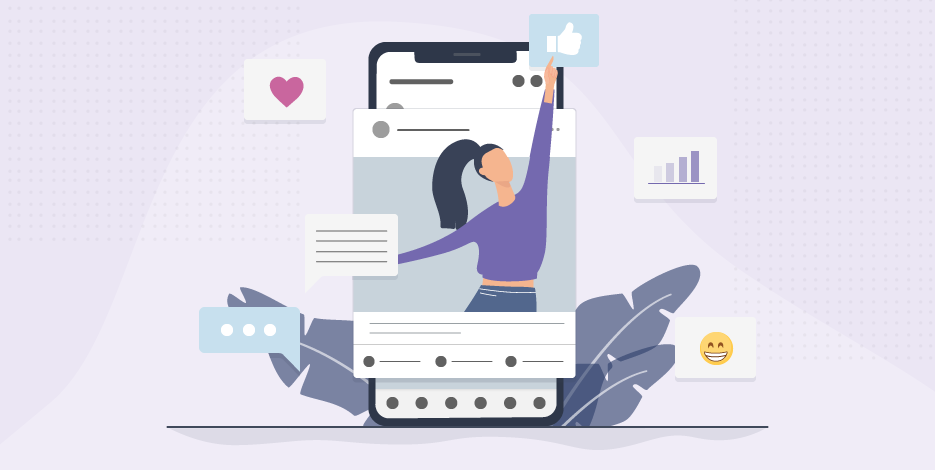
 Published by
Published by
